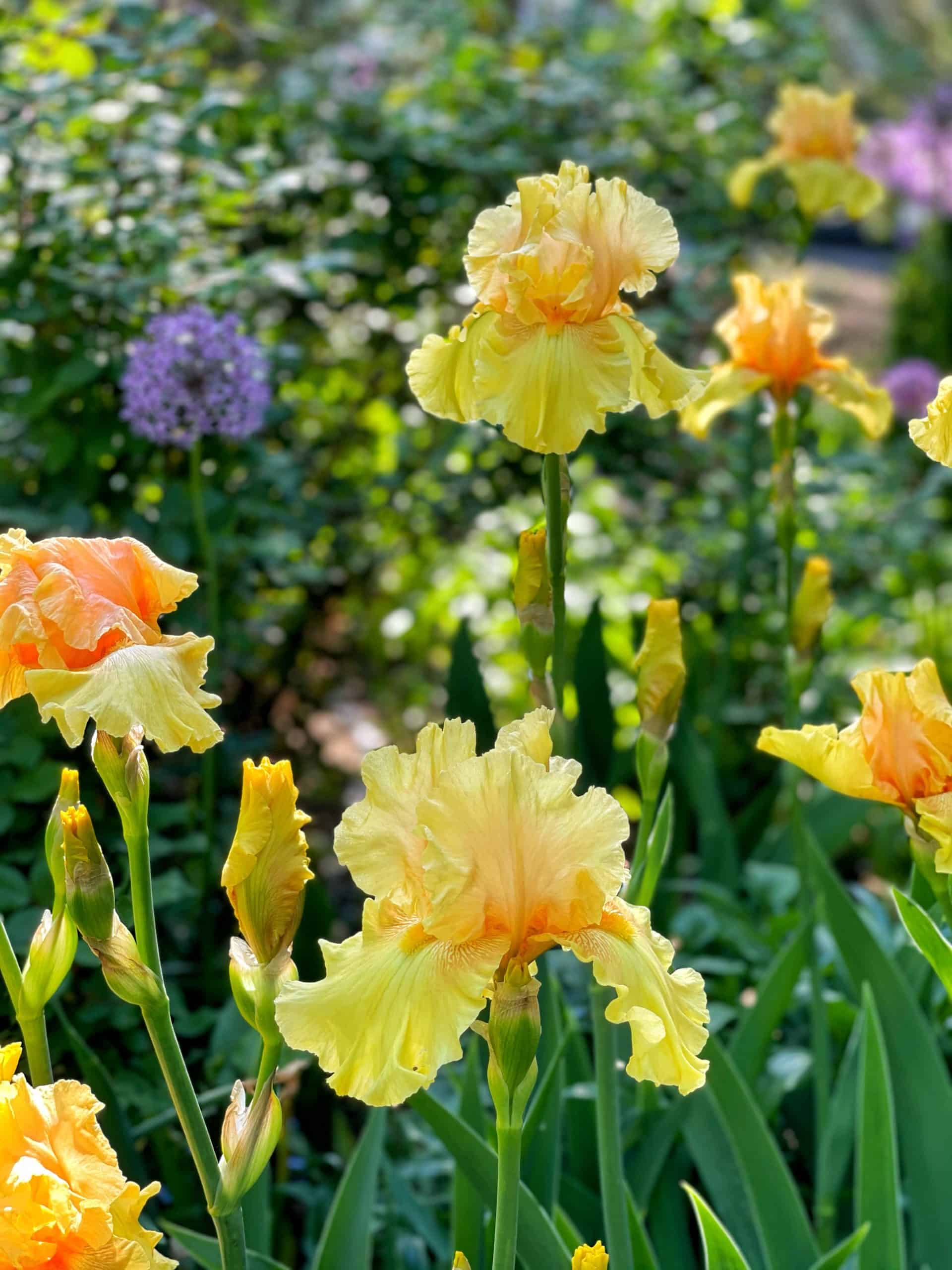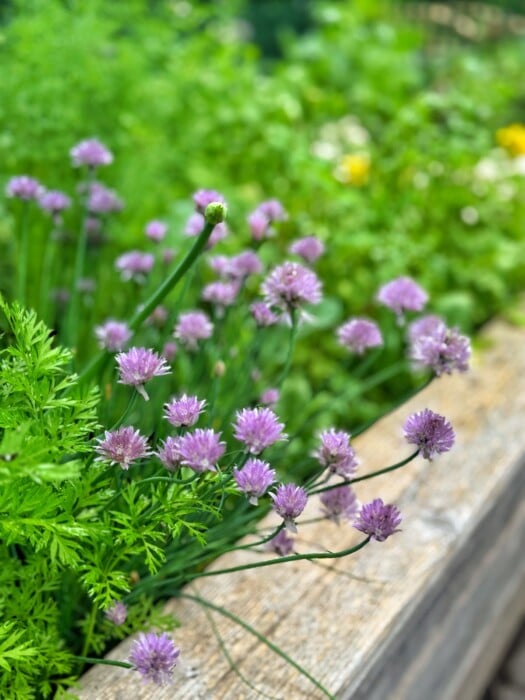Learn how to make a compost pile with this step-by-step guide for beginners. Discover essential tips and the perfect recipe for rich, organic compost.
Composting is a simple and effective way to recycle organic waste and enrich your garden soil. Not only does composting reduce landfill waste, but it also provides essential nutrients that help plants thrive.
Whether you’re a seasoned gardener or a beginner, understanding how to make a compost pile can significantly improve your gardening results. In this guide, I’ll walk you through a step-by-step process to create nutrient-rich compost, highlighting the right materials to use and avoid, and offering practical tips to ensure your composting success.
It’s pretty simple to do and is one of the best ways to improve your soil as well as keep plants healthy. Here’s everything you need to know!
(Posts on stacyling.com may contain affiliate links. Click HERE for full disclosure.)

How to Make a Compost Pile: The Benefits
There are several benefits to using compost in your gardens.
- Compost helps build good soil structure.
- It feeds earthworms and other microbes in the soil.
- Compost helps maintain a neutral soil Ph level.
- It helps retain moisture and air.
- Adds nutrients to keep plants healthy and better protected from pests and disease.

How to Make a Compost Pile: Key Ingredients
Compost is made of organic decomposed matter that includes:
- leaves, twigs, grass, and other garden debris
- kitchen waste from plant-based scraps
- cardboard and other paper products like newspapers or plain paper plates. Be sure there are no plastic coverings on anything.
Compost is made when organic material like food scraps decompose over time. The decomposition becomes what we gardeners call “gold” because it is high in nutrients that enrich overall soil quality and promotes happy, healthy plants.
NOTE: Leaf mold is a little different from compost – you can read more about it in this article here.

How to Make a Compost Pile: What to Avoid
Before tossing things into the compost pile, be sure to exclude the following:
- Fish
- Meat scraps
- Dairy, fats, and oils
- Anything related to the black walnut tree – it’s toxic and prevents certain plants from growing.
- Plants that suffered from pest or disease problems.
- Weeds with seeds. I generally don’t compost them at all to avoid this problem.
- Coal and Charcoal Ashes. Some ash from wood burning fireplace is OK but use very little.
- Cat/Dog animal waste
- Plants or wood waste that was treated with pesticides
How to Make a Compost Pile: Building the Foundation for Rich Soil
Composting is a natural process of breaking down organic matter into nutrient-rich soil. Here’s a recipe for making the best compost recipe.
Essential Ingredients for Composting
It’s super simple to start composting. I used to have piles of compost but then I was gifted a tumbling composter several years ago and love it! Animals can’t get to the ingredients and it breaks things down a little quicker.
Here’s what you need:
- Compost bin (make or buy)
- Kitchen scraps (see above)
- Yard or garden waste (see above)
- Garden fork
Does Compost Turn Into Soil?
Since compost is made of organic material and soil includes other elements such as minerals and rocks, when mixed together, the result is amazing for plants. Thus, compost is considered to be a soil amendment that mixes with existing garden soil to improve its overall structure and health.

How to Make a Compost Pile: Methods
Understanding different composting methods can help you choose the best approach for your garden and lifestyle. Here are a few common methods:
Hot Composting
Hot composting is a fast method that produces compost in a few weeks. It requires regular turning and monitoring of temperature to keep it between 130-160°F.
Cold Composting
Cold composting is slower but less labor-intensive. Simply add materials to the pile and wait 6-12 months for it to decompose. This is the method I use in my gardens because of where I need to locate them on my property. It’s all shaded!
Vermicomposting
Vermicomposting uses worms to break down organic matter. This method is ideal for kitchen scraps and can be done indoors.
Trench Composting
Trench composting involves burying organic materials directly in the garden. This method is great for adding nutrients to specific garden areas without the need for a compost bin.
Bokashi Composting
Bokashi composting is an anaerobic process using a special inoculant to ferment kitchen waste. It’s efficient and can handle dairy and meat scraps.

Compost Bin Options
Choosing the right compost bin can make your composting process more efficient and convenient. Here are some popular options:
Tumbling Composters
Tumbling composters are easy to use and accelerate the composting process by allowing you to turn the compost regularly. They’re great for small spaces and produce compost quickly. I have one and love mine!
Stationary Bins
Stationary bins are simple and affordable. They come in various sizes and are ideal for larger composting needs. However, they require manual turning with a pitchfork or compost aerator.
Worm Bins
Worm bins are perfect for vermicomposting and can be kept indoors or outdoors. They’re excellent for processing kitchen scraps and producing high-quality worm castings.
Compost Piles
Compost piles are the most basic and cost-effective option. They require no bin and can be scaled to fit your needs, but they need more space and manual maintenance. In my former garden, we made a DIY compost bin using wood pallets. It was a great way to use them and cost us nothing to make it!
Enclosed Bins
Enclosed bins keep compost contained and protected from pests. They are a tidy option for urban gardeners but might require more frequent maintenance to ensure proper aeration.

How to Make a Compost Pile: Step-By-Step Directions
Now that you understand the ideal compost recipe and the different ways to compost, let’s chat about how to make a compost pile. The physical structure of your pile is just as important as the ingredients you use. By following these guidelines, you’ll create an environment that encourages rapid decomposition and yields nutrient-rich compost.
Remember! What you include and how you do it are very important. So make sure you don’t incorporate anything from the what NOT to use list above.
1. Choose Your Location and Method
First, decide where you’ll build your pile. Consider factors like sunlight, drainage, and proximity to your garden. A sunny spot helps heat the pile, speeding up decomposition, while good drainage prevents waterlogging. You can build your pile directly on the ground, in a bin, or within a dedicated compost tumbler. Each method has its pros and cons:
- Direct Ground Pile: Simple and inexpensive, but may be less contained.
- Compost Bin: Provides containment and can improve aesthetics.
- Compost Tumbler: Offers easy turning and faster composting.

2. Start with a Base Layer
When making your compost recipe, it’s very similar to baking a cake, except you are doing it in pile outside. Begin by laying down a base layer of coarse material, such as twigs, branches, or shredded cardboard. This layer promotes aeration and drainage, preventing the pile from becoming compacted. Aim for a layer about 4-6 inches thick.
3. Layer Your Greens and Browns
Following the “lasagna” method, alternate layers of green and brown materials. Remember the ideal ratio we discussed earlier: roughly 3 parts browns to 1 part greens. Aim for layers of 2-4 inches thick for each material. For example:
- Brown Layer: Dry leaves, shredded paper, straw.
- Green Layer: Grass clippings, kitchen scraps, coffee grounds.
Moisten each layer as you add it. The pile should be damp, like a wrung-out sponge, but not soaking wet.

4. Incorporate Activators (Optional)
To speed up decomposition, you can add compost activators, such as finished compost or a commercial compost starter. These introduce beneficial microorganisms to your pile. Sprinkle a thin layer of activator between your green and brown layers.
5. Build Your Pile to the Right Size
For optimal composting, aim for a pile that is at least 3 feet by 3 feet by 3 feet. This size helps retain heat and moisture, essential for decomposition. However, if you are using a tumbler, follow the manufacturers size guidelines.
6. Turn Your Pile Regularly
Turning your compost pile is crucial for aeration and even decomposition. Use a garden fork or pitchfork to turn the pile every few days to weeks, depending on your method. This helps introduce oxygen, which fuels the microorganisms breaking down the materials. If using a tumbler, simply turn it as recommended by the manufacturer.
7. Maintain Moisture and Monitor Temperature
Keep your compost pile consistently moist. Use a garden hose or watering can to add water as needed. A healthy compost pile should also generate heat. If you’re using the hot composting method, aim for a temperature between 130°F and 160°F. You can monitor the temperature using a compost thermometer.
8. Be Patient
Composting takes time. Depending on the method, size, and materials used, your compost may be ready in a few weeks to several months. When it’s finished, it will have a dark, crumbly texture and a pleasant earthy smell.
Gardening Tip – to speed up the process even more, chop or shred organic materials before adding them to the compost pile.

Troubleshooting Compost Recipe Issues
Even with the best intentions, composting can sometimes present challenges. Here are some common problems and how to address them:
Excess Moisture
- Symptom: Compost is too wet or soggy.
- Solution: Add more brown materials like leaves or straw, and turn the compost to improve aeration.
Foul Odor
- Symptom: Compost has a bad smell.
- Solution: Ensure a proper balance of green and brown materials. Turn the compost to introduce more oxygen.
Slow Decomposition
- Symptom: Materials are not breaking down.
- Solution: Chop materials into smaller pieces, turn the compost more frequently, and ensure the pile is moist but not too wet.
Pests and Rodents
- Symptom: Unwanted animals in the compost.
- Solution: Avoid adding meat, dairy, and oily foods. Use an enclosed bin to deter pests.

How to Make a Compost Pile: Seasonal Tips
Adjusting your composting practices based on the season can help maintain efficiency year-round.
Spring
- Kickstart the Pile: Turn the compost and add fresh green materials to reactivate the decomposition process after winter.
Summer
- Maintain Moisture: Water the compost occasionally to prevent it from drying out in hot weather.
- Turn Regularly: Frequent turning helps to manage the increased activity and heat.
Fall
- Add Leaves: Fall is a great time to add plenty of fallen leaves, which are excellent brown materials.
- Prepare for Winter: Build up the compost pile to retain heat through the colder months.
Winter
- Insulate the Pile: Use straw or a tarp to keep the pile warm.
- Continue Adding Materials: Keep adding kitchen scraps, but expect slower decomposition.

How to Make a Compost Pile FAQ
How long does it take to make compost?
Composting can take anywhere from a few weeks to a year, depending on the method and conditions. Hot composting can produce compost in 2-3 months, while cold composting might take up to a year.
What should I do if my compost recipe smells bad?
Bad smells usually indicate too much moisture or lack of oxygen. Add more brown materials like leaves or straw and turn the compost to introduce air.
Can I compost in the winter?
Yes, composting can continue in winter, though decomposition slows down. Insulate the pile with straw or a tarp and keep adding kitchen scraps.
How often should I turn my compost?
For hot composting, turn the pile every 1-2 weeks. Cold composting requires less frequent turning, about once a month or less.
Why is my compost recipe not breaking down?
Slow decomposition can be due to large material pieces, insufficient moisture, or lack of aeration. Chop materials into smaller pieces, ensure the pile is moist, and turn it regularly.
Can I compost pet waste?
No. It’s best to avoid composting pet waste from carnivorous animals like dogs and cats due to potential pathogens. Waste from herbivorous pets like rabbits can be composted.

How to Make a Compost Pile: How I Use It in My Gardens
I often get asked how I feed my garden flowers and plants. While I do use some fertilizers for my roses, annuals, and houseplants, compost is my go-to for nourishing all my perennials, shrubs, and trees.
Each spring and fall, I add a layer of compost to my gardens and container plantings. People are usually surprised that I don’t use more fertilizers, but with good soil, they just aren’t necessary. One of the best ways to achieve rich soil is by making your own compost or buying quality compost from a garden nursery.

Final Thoughts on How to Make a Compost Pile
Composting is a rewarding process that benefits both your garden and the environment. By turning organic waste into nutrient-rich compost, you can enhance your soil’s structure, promote healthy plant growth, and reduce landfill waste.
Whether you’re a beginner or an experienced gardener, this guide provides you with the essential knowledge and tools to start composting effectively.
Remember, the key to successful composting lies in maintaining the right balance of materials, proper aeration, and patience. Happy composting, and enjoy the rich, fertile soil your garden will thrive in!
For more information about home composting, please read this article from the Rutgers Cooperative Extension.
To drill down on more beginner gardening techniques and tips, please read these posts:
- Flower Gardening 101
- Growing a Cut Flower Garden for Beginners
- Container Garden Ideas for Beginners
- How to Start a Vegetable Garden
- Herb Gardening for Beginners
If you have any questions, comments or suggestions, please let me know in the comments below. I’d love to hear! And feel free to share this post with anyone you think would find it helpful too.
Thank you for visiting the blog today!
Enjoy your day! xo

Don’t Want to Make a Compost Bin? Shop Here
No matter what size home or property you have, there are compost bins readily available to fit your needs.












